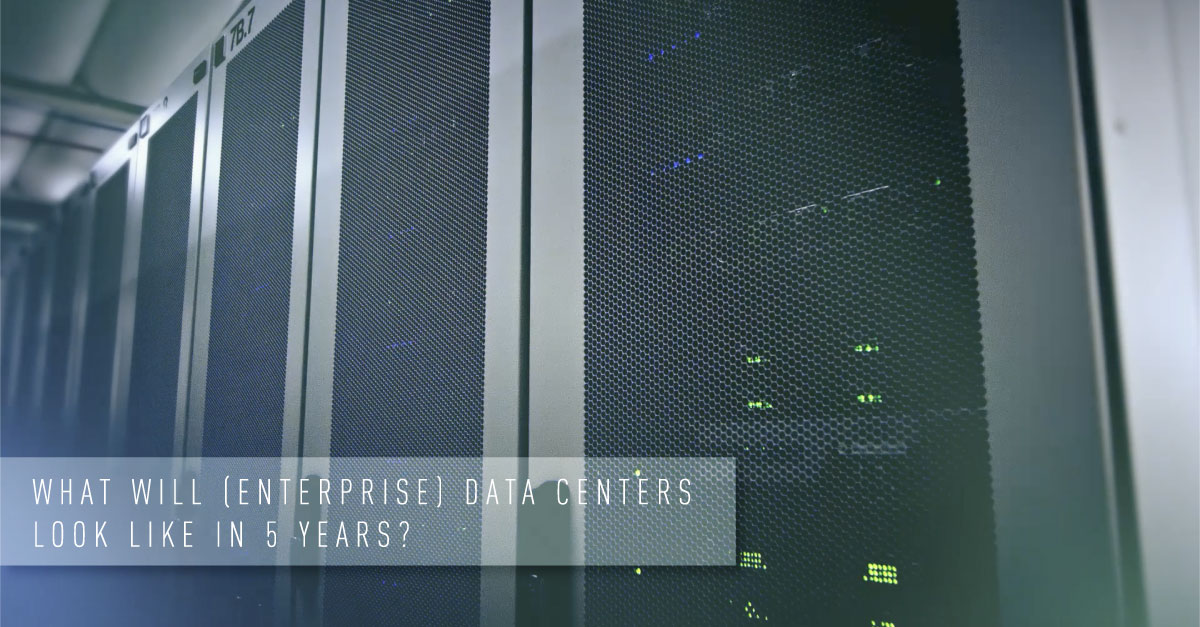What Will (Enterprise) Data Centers Look Like in 5 Years?
Isaiah LaJoie
March 16, 2020
- Categories:
- Industry Trends and Solutions
- Tags:

The short answer is an easy one: we have no idea, since no one can predict the future. In a previous blog post, we addressed Server Technology’s flexible design approach to rack power using the HDOT Cx outlet. In this blog, we would like to shift our focus to the future of enterprise data centers, and the reasons why a flexible approach today will be key to the future.
The problem? Although it takes a fair amount of brainpower to design and manufacture a Servertech PDU, we don’t necessarily have access to publishable data and analytics about the enterprise data centers we work in. In other words, we are pretty smart – but not Gartner smart, if you know what I mean. As such, we wanted to share some important takeaways from a published Gartner report that we believe help answer that question.
Hybrid IT Standardization
As a result of the cloud's disruptive influence, a lot of businesses have prioritized the cloud as a resource. However, the cloud does have its limits in terms of practical solutions for many applications and workloads.
Gartner is offering another solution, which it has dubbed “hybrid IT.” This calls for IT organizations to adopt the role of service broker as part of a wider strategy. Within this approach, enterprise data centers are more widely distributed, and applications and workloads are assigned according to their best fit and where they can bring about the best outcomes for the business. New, emerging infrastructure models also carry the promise of edge and on-premise computing solutions that will expand infrastructure options for enterprise data centers even further.
More Simplification, More Standardization
It is widely agreed that the first place for data centers to start is simplification. The objective should be to remain relevant by adjusting to a continuously changing digital landscape where the cloud is becoming more and more of a force to be reckoned with. Data center infrastructures are currently changing—and will continue to change—from monolithic or proprietary systems to "franchise style" infrastructures that are reproducible and have the characteristics of commercial off-the-shelf (COTS) infrastructures.
Smaller, Denser and More Powerful
There is currently a trend toward enterprise data centers becoming increasingly smaller, denser, and more vertical. Five years ago, enterprise data centers with average energy densities as high as 5 kW/rack were common. Now, standard averages are running at 8 kW/rack and higher. Workload distribution to the cloud, colocation, and edge is requiring less space in data centers. That’s because virtualization, integrated systems, HCI options, and advanced solid-state array (SSA) storage require less physical space and comparable amounts of power.
Efficiency and Cost-Effectiveness
Due to their inherent complexity, data centers are frequently slated for initiatives aimed at cost-optimization. Efficiency is the chief concern among I&O leaders who count infrastructure modernization among their key responsibilities. Add to that the complexity of the business-driven environment and internal demands, and it's easy to see how many organizations’ IT budgets often wind up falling short. In order to address this, businesses all over the world are crafting, adopting, and improving varied technologies for the improvement of data center efficiency.
The Demand for More Green and More Sustainability
It is no mystery that data centers are on the global radar for their energy consumption. Thus, electrical usage has become a significant environmental issue for the managers of data centers. On the operational side, green data centers are more efficient almost by definition. These can deliver maximum production from the minimum amount of resources without a drop in performance or resilience, and without compromising security.
This approach necessitates an end-to-end, integrated plan that considers all aspects of the data center, including construction, floor plans, materials, energy delivery and storage, technology architecture, waste management, asset management, capacity management, and operations. Once in place, however, the new green data center can far surpass its retrofitted rivals in terms of efficiency almost without trying.
As indicated above, there's no sure-fire way to determine what the future will hold for data centers in five years. With unpredictable and occasionally volatile market forces and the breakneck speed with which new solutions are being developed, it's simply impossible to predict. What is certain? given the aforementioned speed, increasing flexibility, and the tons of gray matter being dedicated to efficiency, the industry is poised to continue to deliver more to a world that continues to demand more... efficiently.
Thanks for your submission. One of our Power Strategy Experts will get back to you shortly.